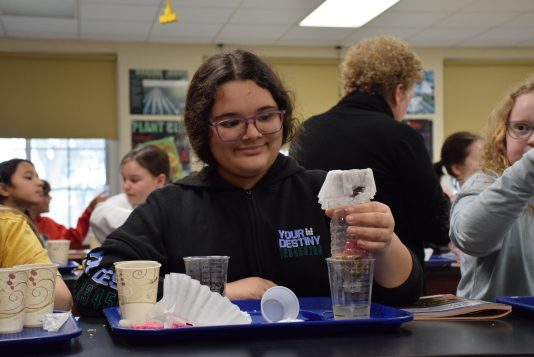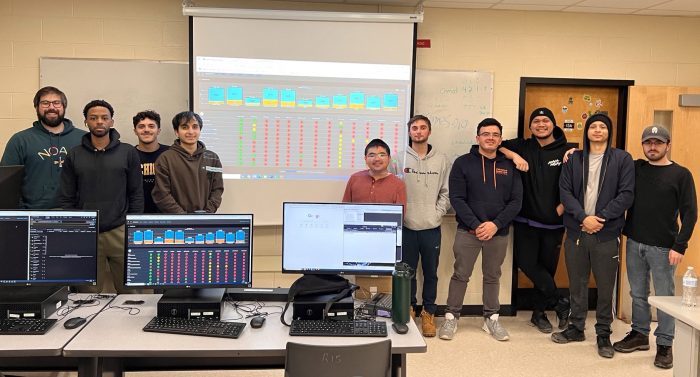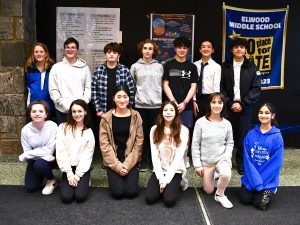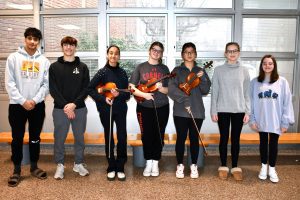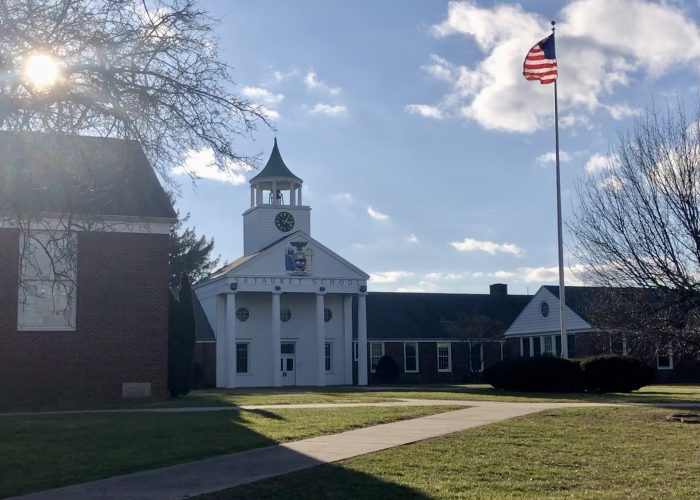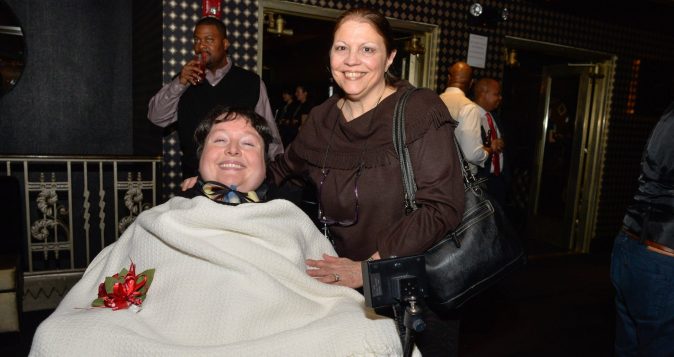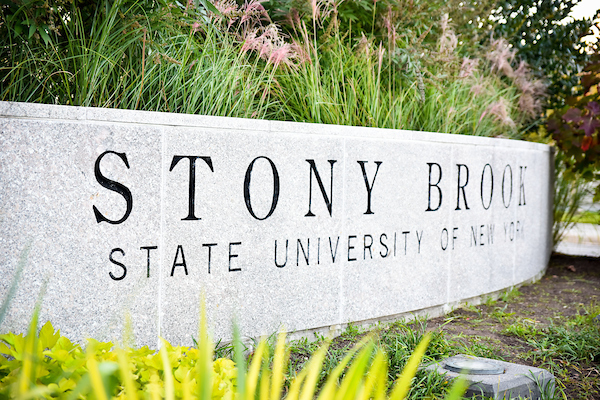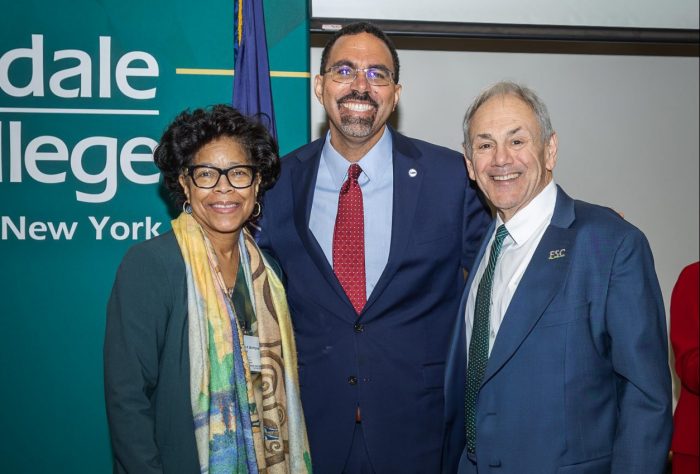Elected officials from across Long Island joined forces in a rally Feb. 1 held on the front lawn of Ward Melville High School. A diverse crowd of educators, students, parents, concerned citizens and community figures gathered for the event, lining Old Town Road with signage reading “$ave Our School$,” as officials vehemently spoke in opposition to the proposed cuts to education funding outlined in the latest state budget proposal.
The proposed cuts, part of a broader state budget plan aiming to address fiscal challenges, have sparked widespread concern among education advocates and community members. Long Island officials, representing various districts and political affiliations, united in their stance against these reductions, emphasizing the detrimental impact they would have on the region’s schools and students.
New York State Sens. Anthony Palumbo (R-New Suffolk) and Mario Mattera (R-St. James), along with state Assemblymembers Ed Flood (R-Port Jefferson), Jodi Giglio (R-Riverhead) and Port Jefferson Deputy Mayor Rebecca Kassay (D) all stood before the podium expressing their respective concerns.
“Governor Hochul’s proposed budget is a choice to underfund our schools, and it’s shameful,” Palumbo said. “We’re here to bring attention to that. This is critical. This is absolutely important.”
Palumbo, who represents New York Senate District 1, spanning from Stony Brook to Montauk, opened the rally addressing the financial consequences of the proposal on his district.
“The governor’s proposed budget cuts state aid by $168 million, affecting 337 school districts statewide,” Palumbo said. “My district, Senate District 1, around 330,000 people, stands to lose $20,025,000 if the governor’s budget is adopted. And where we’re standing here in Three Village, they stand to lose $8.9 million in funding.”
Three Village Central School District is among the many school districts to be affected by the budget proposal, experiencing the highest values lost in aid. Among the other districts to be affected are Port Jefferson School District standing the potential to be hit by the largest percentage of funding loss on Long Island at over 28%. Mount Sinai, Cold Spring Harbor, Smithtown and Kings Park school districts also stand to be negatively affected by the proposal.
Concerns for education quality and job loss
The rally highlighted the importance of adequate funding for schools in ensuring the quality of education and opportunities for all students. Flood spoke to his concerns for the quality of education students would receive suggesting programs, extracurricular activities and staff would have to be cut as a consequence of the proposed cuts to education funding.
“It’s disgraceful that we’re talking about having to cut budgets, in terms of cutting buildings, cutting programs, cutting staff and faculty,” Flood said. “We as people, teachers and school employees have our own families and right now to play politics with the lives of our students and our workforce is just shameful.”
Cuts to education funding can have a multifaceted impact that can undermine the quality of education by diminishing resources, increasing class sizes, reducing extracurricular opportunities and straining the workforce, ultimately impeding students’ academic success and holistic development.
Echoing Flood’s sentiments, Mattera highlighted the direct consequences of reduced funding on classroom resources and student support services. “All the workers that are inside, our custodians, everybody, our security officers have a chance of losing their jobs. Does anybody want to lose their jobs? No,” Mattera emphasized. “You know what, our governor is making sure that this is going to happen.”
The rally also featured testimonials from parents who shared personal stories illustrating the impact of education funding on their lives. Kristen Gironda, a member of the Three Village PTA Council board, spoke about the challenges students may face and the critical role of adequate funding in addressing those obstacles. “We rely heavily on Foundation Aid for the success of our current and future students,” Gironda said. “Cutting this money from the current budget would be detrimental to the future of our students, their education and the opportunity that we can continue to provide them with.”
Students were also present at the rally, donning signs and standing alongside the officials as cars driving past honked their horns in reaction to the public event.
After all other officials spoke, Kassay concluded, “We must work together as a full district to make sure that as changes need to be made and that they’re made with the voices of the people standing here, the voices of the school behind us, and all the schools in the area to make sure that the changes are incremental, not straining taxpayers and not sacrificing jobs.”
As the rally came to a close, elected officials pledged to continue advocating for increased education funding and urged community members to join them in their efforts urging everyone to “Get vocal with Governor Hochul!”






